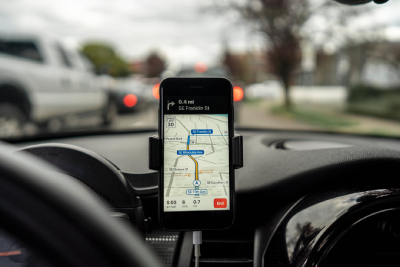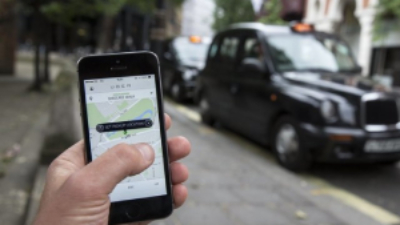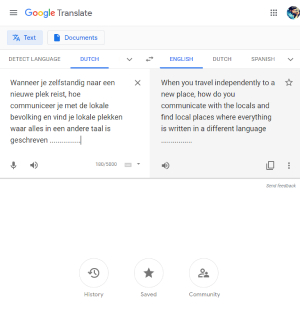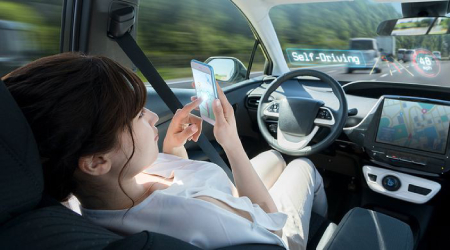9 Ways Machine Learning Impacts Our Daily Lives
Machine Learning (ML), the subset of artificial intelligence, is gaining fresh momentum. Powerful and affordable computational processing, growing volumes of huge data sets, affordable data storage options and the ability to automatically apply complex mathematical calculations to big data faster than before are the factors responsible for the resurging interest.
ML is basically the idea of training machines to recognize patterns in data and apply them to particular problems. The iterative aspect of machine learning is important because when models are exposed to new data, they are able to independently adapt. They learn from previous computations and predictions to produce reliable, repeatable decisions and results with minimal or no human intervention.
Machine learning has helped us to enhance not only many industrial and professional processes but also our everyday living. Machine learning algorithms are now used extensively to solve various challenges ranging from traffic predictions to self-driving cars.
Let’s have a quick look at a few of them.
1. Traffic Prediction by Google Maps
Google Maps is the most trusted app we use whenever we go out and require assistance in directions and traffic. How many of you know that the powerful machine learning algorithm and big data are driving the google maps?

Let’s see the amazing ways Google Map uses Machine Learning and Big Data couple for traffic estimation.
Google Maps uses colored lines to represent traffic conditions on the major highways. These colored lines refer to the speed with which one can travel on that road. You will find Green, Yellow and Red colored lines indicating clear, slow-moving, and heavily congested traffic respectively. If it’s a gray line, that means there’s no traffic information available at the time and a red-black line indicates extremely slow or stopped traffic.
This traffic indication is of great help when you’re trying to determine the fastest way to your destination. Sometimes the map even suggests “Despite the Heavy Traffic, you are on the fastest route“.
Have you ever wondered how does Google know the traffic conditions between where you are and where you’re trying to go?
Google Maps makes use of two different kinds of information to formulate its traffic views and faster-route recommendations.
• Historical data about the average time it takes to cover a particular section of road at specific times on specific days
• Real-time data sent by smartphones and sensors that report how fast vehicles are moving right then.
It’s not just this information that powers the amazing predictive powers of Google Maps; its rich and reliable data from many sources, coupled with powerful machine-learning algorithms.
2. Facebook Face Recognition
Machine learning is really fun when it comes to facebook face recognition. Automatic friend tagging suggestions is one of the most common applications of Machine Learning.
Facebook’s Deep Learning project DeepFace is responsible for this magic! Facebook uses face detection and image recognition to automatically find the face of the person which matches it’s Database and hence suggests us to tag that person based on DeepFace. It also provides Alt Tags (Alternative Tags) to images already uploaded on facebook. If we inspect the following image on Facebook, the alt-tag has a description.

3. Transportation and Commuting
Cab aggregating services like Uber, Ola, Grab and so on have changed the world of transportation. If you have used any of these apps to book a cab, you are already using Machine Learning to an extent. These provide a personalized experience which is unique to you. They automatically detect your location and provides options to either go home or office or any other frequent place based on your Transport History and Patterns.
These apps use a Machine Learning algorithm layered on top of Historic Trip Data to make a more accurate ETA (Estimated Time Of Arrival) prediction. The implementation of machine learning in such apps have improved delivery and pickup accuracy drastically.

4. Virtual Personal Assistants
Virtual personal assistants such as Alexa and Siri are everywhere. As the name implies, Virtual Personal Assistants (VPN) are the software agents that can perform tasks or services for you by interpreting verbal inputs or commands. Speech Recognition, Speech to Text Conversion, Natural Language Processing and Text to Speech Conversion are few of the major Applications of Machine Learning in VPA.
Say for example you need to do is ask a simple question like “What is my schedule for tomorrow?” or “Show my upcoming Flights“. To answer this, your personal assistant searches for information or recalls your related queries to collect relevant information. Chatbots in various food ordering apps, online training websites, and commuting apps have started using virtual personal assistants.
5. Dynamic Pricing
Demand-based price fluctuations are nothing new. Algorithmic dynamic pricing is transforming transportation, e-commerce, entertainment, and a wide range of other industries. As algorithms become more powerful and more data becomes available, product and service prices can automatically respond to demand and competition in real time.
There are a vast amount of pricing strategies that depend on the objective sought. Be it a movie ticket, a plane ticket or cab fares, everything is dynamically priced. In recent years, machine learning has enabled pricing solutions to track buying trends and determine more competitive product prices.
Have you ever heard of Geosurge? It is nothing but the nickname of Uber’s surge pricing which is one of the biggest uses of Machine Learning. Uber uses a system that is very sensitive to external factors such as global news events, weather, historical data, holidays, time, traffic, etc. If you are getting late for a meeting and you need to book an Uber in a crowded area, get ready to pay twice the normal fare. Even for flights, if you are traveling in the festive season the chances are prices will be twice the original price.
6. Google Translate
When you travel to a new place independently how do you communicate with the locals and find local spots where everything is written in a different language. Seems really difficult, right? Here Google translator extends a helping hand. Google’s GNMT (Google Neural Machine Translation) is a Neural Machine Learning that works on thousands of languages and dictionaries. It uses Natural Language Processing to improve its translations between texts. POS Tagging, NER (Named Entity Recognition) and Chunking are some of the other techniques used by this best and most used Application of Machine Learning.

7. Online Video Streaming (Netflix)
With over 100 million subscribers, there is no doubt that Netflix has a monopoly in the online streaming world. How could one single website take on Hollywood? Why blockbuster failed and Netflix’s popularity skyrocketed? The answer is machine learning!

The Netflix algorithm constantly gathers massive amounts of data about various users’ activities such as pause, rewind, or fast forward, the day you watch shows/movies (, date and time you watch, ratings and searches, browsing /scrolling behaviour and a lot more.
They collect this data for each subscriber they have and use their Recommender System and a lot of Machine Learning Applications. That’s why they have such a huge customer retention rate.
8. Fraud Detection
Experts predict online credit card fraud to soar to a whopping $32 billion in 2020! It’s a worrying fact for sure and the human review and rule-based methods which were employed earlier is not reliable in today’s scenario.
Machine Learning allows us to find patterns of an anomaly in everyday transactions. Fraud Detection is one of the most useful applications of Machine Learning. A plethora of payment channels is available such as credit/debit cards, smartphones, numerous wallets, UPI and much more. As the transaction channels increase, criminals have become adept at finding loopholes.
See how machine learning works in the battle against frauds:
Whenever a customer carries out a transaction – the Machine Learning model thoroughly analyses their profiles searching for suspicious patterns. In Machine Learning, problems like fraud detection come under classification problems.
Thousands of patterns on the customer purchasing journey are detected and recognized by these algorithms. Fraud in a large volume of transactions is predicted by applying cognitive computing technologies to raw data.
9. Self Driving Cars
“Self-driving cars are the natural extension of active safety and obviously something we should do.” ~Elon Musk
I find the concept of self-driving cars as one of the coolest applications of Machine Learning. This was something that seemed science fiction a few years ago but now a soon-to-become part of our life. Yes, machine learning is the core method that enables self-driving vehicles to visualize their surroundings, object detection, object identification or recognition of object classification, object localization and prediction of behaviours, calculation of movement and so on.
According to a recent survey by Autolist, Tesla is the most trusted brand when it comes to bringing self-driving vehicles to market.

Wrapping Up
As you can see, all of our lives are impacted by machine learning on a daily basis. Whether we are using navigation, online purchase, social media browsing or watching your favorite show on your favorite streaming service, machine learning is impacting our choices in one way or another.
Do let us know how you feel about machine learning impacting our lives by writing in the comments section below.



Found it very interesting and well done.Thanks for sharing.
We’re glad that you’ve found it interesting. Thank you…
At this moment I am going away to do my breakfast, when having my breakfast coming over again to read more news.|